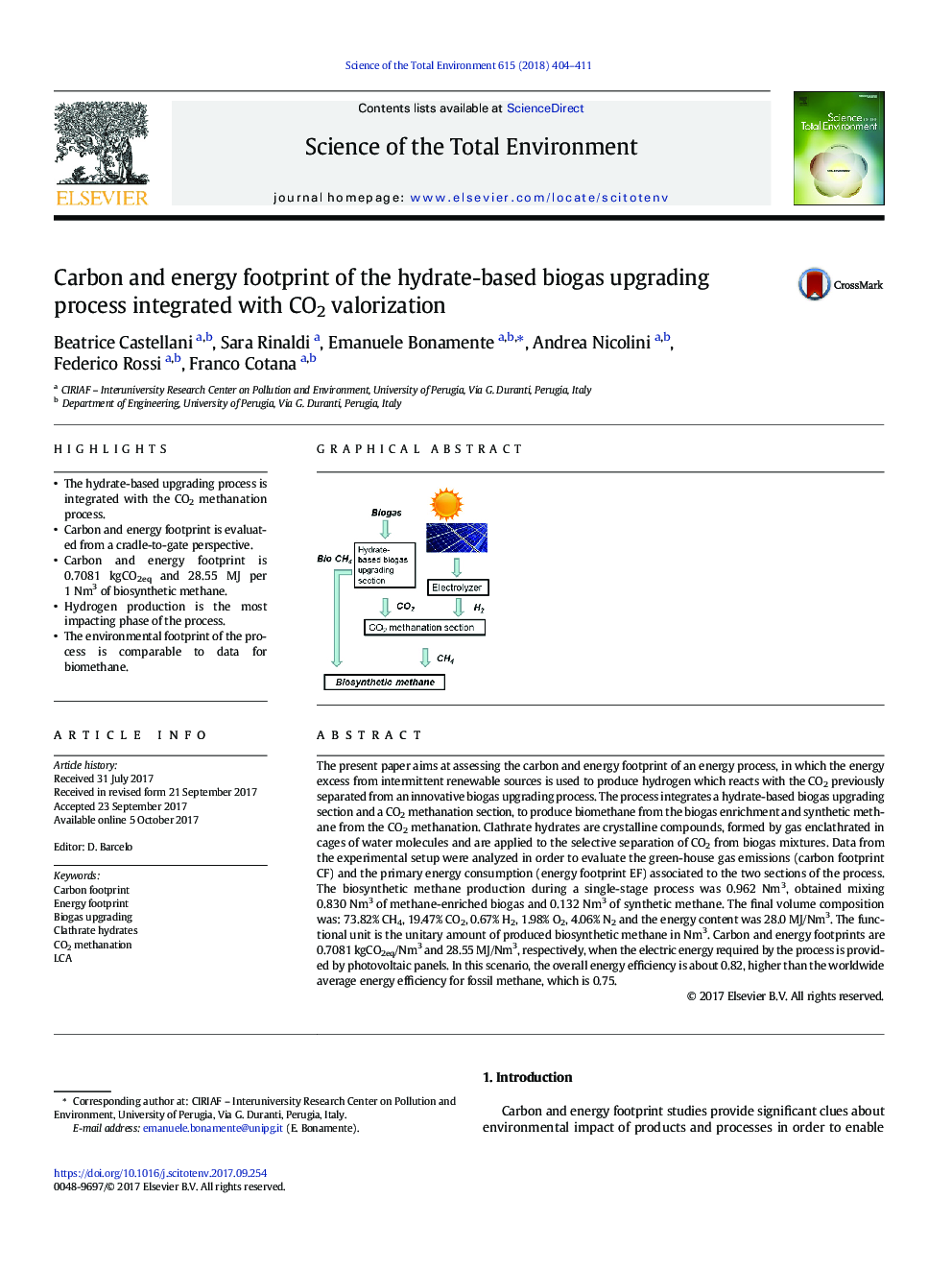| Article ID | Journal | Published Year | Pages | File Type |
|---|---|---|---|---|
| 5749795 | Science of The Total Environment | 2018 | 8 Pages |
â¢The hydrate-based upgrading process is integrated with the CO2 methanation process.â¢Carbon and energy footprint is evaluated from a cradle-to-gate perspective.â¢Carbon and energy footprint is 0.7081 kgCO2eq and 28.55 MJ per 1 Nm3 of biosynthetic methane.â¢Hydrogen production is the most impacting phase of the process.â¢The environmental footprint of the process is comparable to data for biomethane.
The present paper aims at assessing the carbon and energy footprint of an energy process, in which the energy excess from intermittent renewable sources is used to produce hydrogen which reacts with the CO2 previously separated from an innovative biogas upgrading process. The process integrates a hydrate-based biogas upgrading section and a CO2 methanation section, to produce biomethane from the biogas enrichment and synthetic methane from the CO2 methanation. Clathrate hydrates are crystalline compounds, formed by gas enclathrated in cages of water molecules and are applied to the selective separation of CO2 from biogas mixtures. Data from the experimental setup were analyzed in order to evaluate the green-house gas emissions (carbon footprint CF) and the primary energy consumption (energy footprint EF) associated to the two sections of the process. The biosynthetic methane production during a single-stage process was 0.962Â Nm3, obtained mixing 0.830Â Nm3 of methane-enriched biogas and 0.132Â Nm3 of synthetic methane. The final volume composition was: 73.82% CH4, 19.47% CO2, 0.67% H2, 1.98% O2, 4.06% N2 and the energy content was 28.0Â MJ/Nm3. The functional unit is the unitary amount of produced biosynthetic methane in Nm3. Carbon and energy footprints are 0.7081Â kgCO2eq/Nm3 and 28.55Â MJ/Nm3, respectively, when the electric energy required by the process is provided by photovoltaic panels. In this scenario, the overall energy efficiency is about 0.82, higher than the worldwide average energy efficiency for fossil methane, which is 0.75.
Graphical abstractDownload high-res image (49KB)Download full-size image
